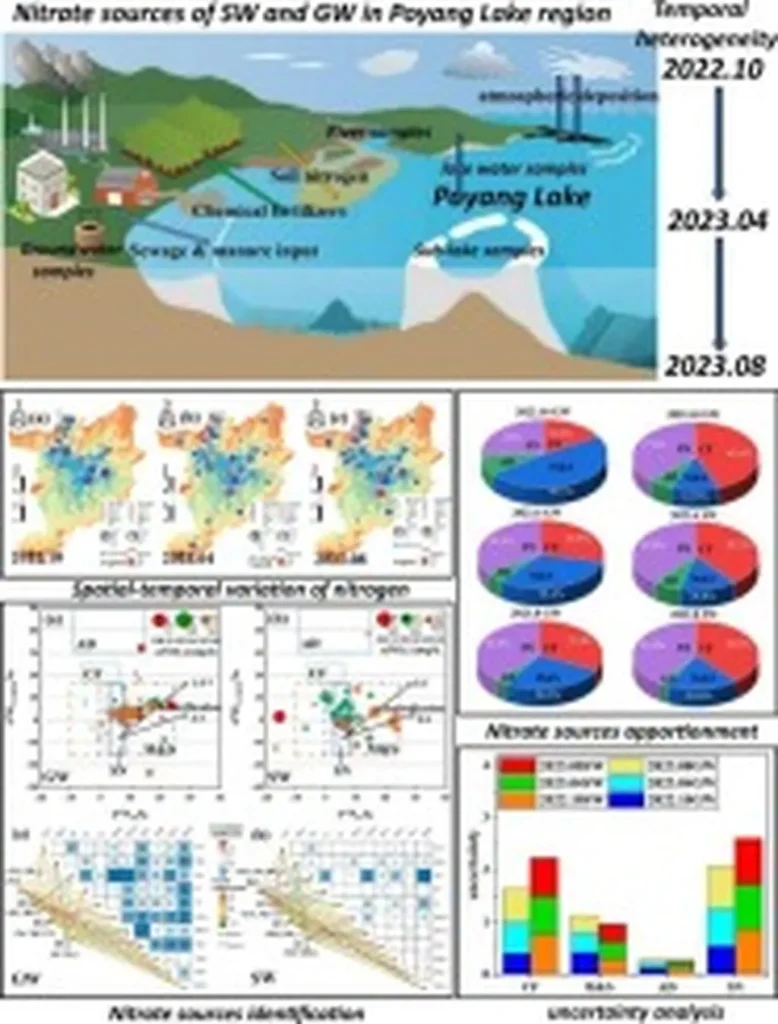In the heart of China’s intensive agricultural landscape, a groundbreaking study has shed new light on the intricate dance between irrigation, nitrogen inputs, and groundwater quality. Published in *Agricultural Water Management*, the research, led by Xinyue Kou of the State Key Laboratory of Efficient Utilization of Agricultural Water Resources, challenges conventional wisdom by highlighting the often-overlooked role of irrigation water in nitrogen budgets.
The study, focusing on the Shandong section of the lower Yellow River, employed a sophisticated blend of hydrochemical analysis, isotope tracing, and Bayesian mixing modeling to unravel the complex web of nitrate sources. “We found that irrigation water is a significant contributor to groundwater nitrate levels, particularly in cropland areas,” Kou explained. This revelation is a game-changer for the agricultural sector, where nitrogen management has traditionally focused on soil and fertilizer inputs.
The findings paint a nuanced picture of nitrate dynamics. From 2011 to 2021, nitrate concentrations in the lower Yellow River declined, with soil nitrogen, manure, and sewage emerging as the primary sources. However, the contribution of Yellow River water to groundwater nitrate in cropland areas was substantial, at 16.7%, compared to just 4.5% in residential areas and 8.5% in livestock and poultry breeding areas. This disparity underscores the critical role of irrigation practices in nitrogen cycling.
The study also revealed a spatial and temporal evolution in nitrate concentrations. While groundwater nitrate levels decreased progressively in inland areas from 2009 to 2019, coastal areas experienced a slight increase. This geographic variation is closely tied to land use types and irrigation practices, with manure and sewage identified as the dominant nitrate sources in groundwater.
The health implications of these findings are significant. Using Monte Carlo simulation for human health risk assessment, the researchers found that infants were most vulnerable to nitrate exposure, although overall health risks decreased from 2009 to 2019. This highlights the urgent need for targeted interventions to protect vulnerable populations.
The commercial impacts of this research are profound. By incorporating irrigation water into nutrient management strategies, farmers and agricultural stakeholders can optimize nitrogen use, reduce environmental pollution, and enhance groundwater quality. “This study underscores the importance of a holistic approach to nitrogen management,” Kou noted. “It’s not just about soil and fertilizer; irrigation water plays a pivotal role.”
The integration of Bayesian mixing modeling and human health risk assessment in the Yellow River irrigation district marks a significant advancement in the field. This innovative approach could pave the way for more precise and effective nitrogen management strategies, benefiting both the agricultural sector and public health.
As the global agricultural community grapples with the challenges of sustainable intensification, this research offers valuable insights and practical solutions. By embracing a more comprehensive understanding of nitrogen dynamics, stakeholders can work towards a more sustainable and resilient future for agriculture.

